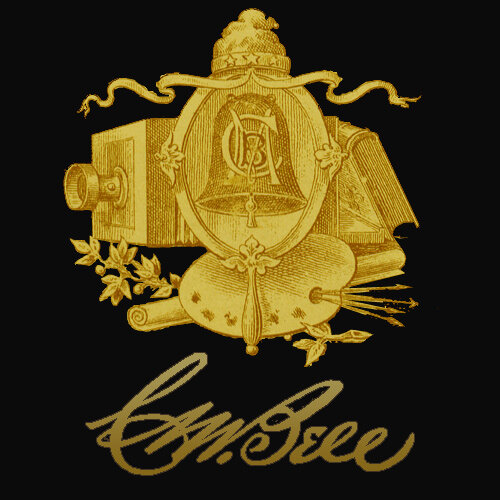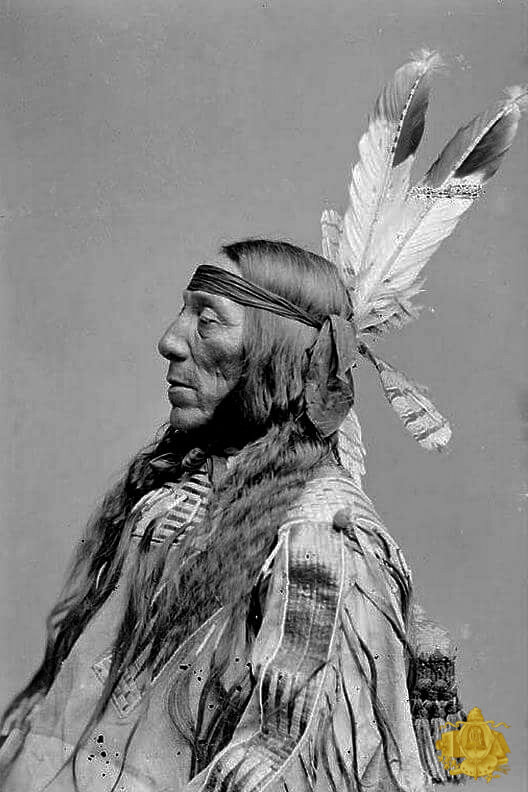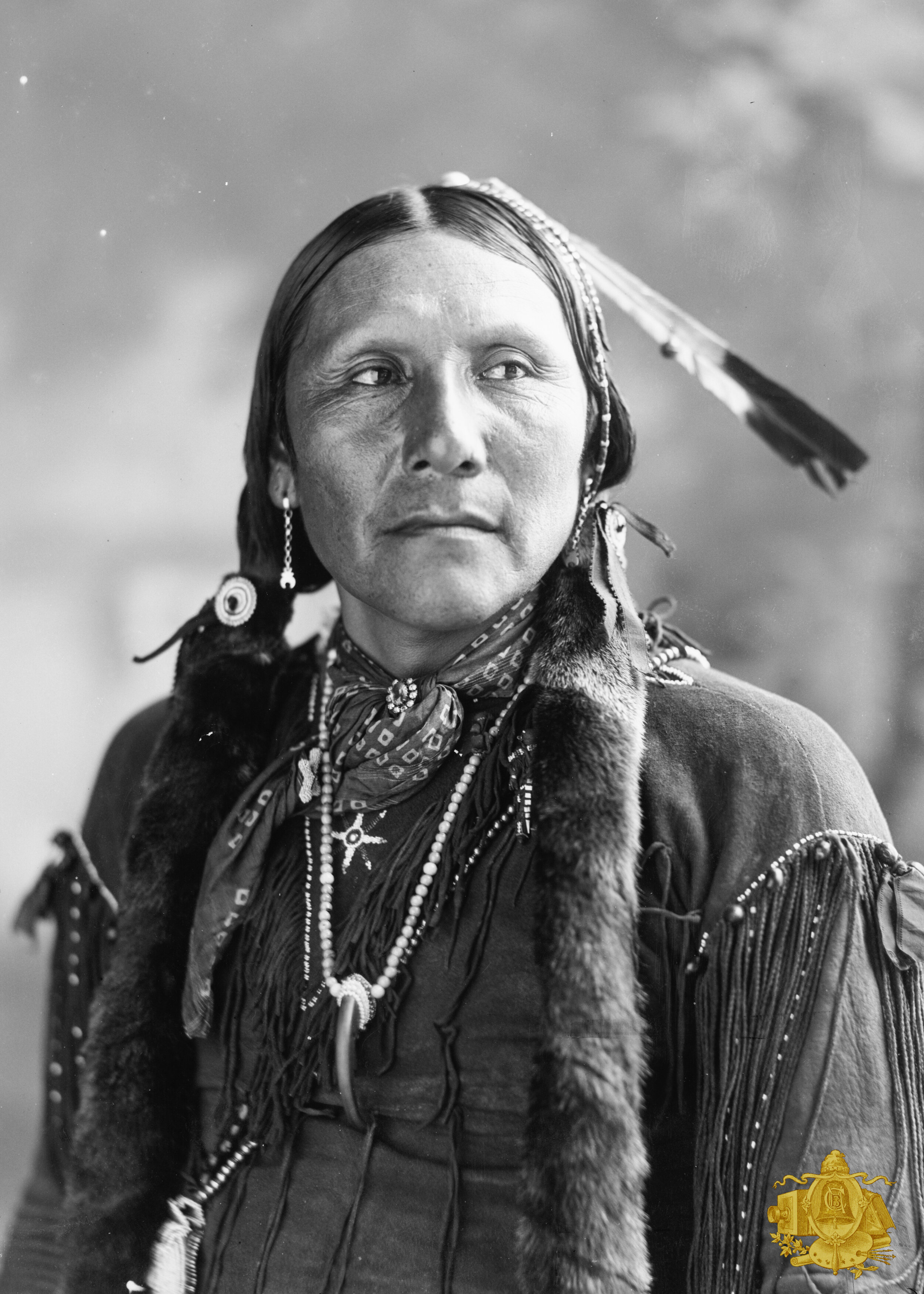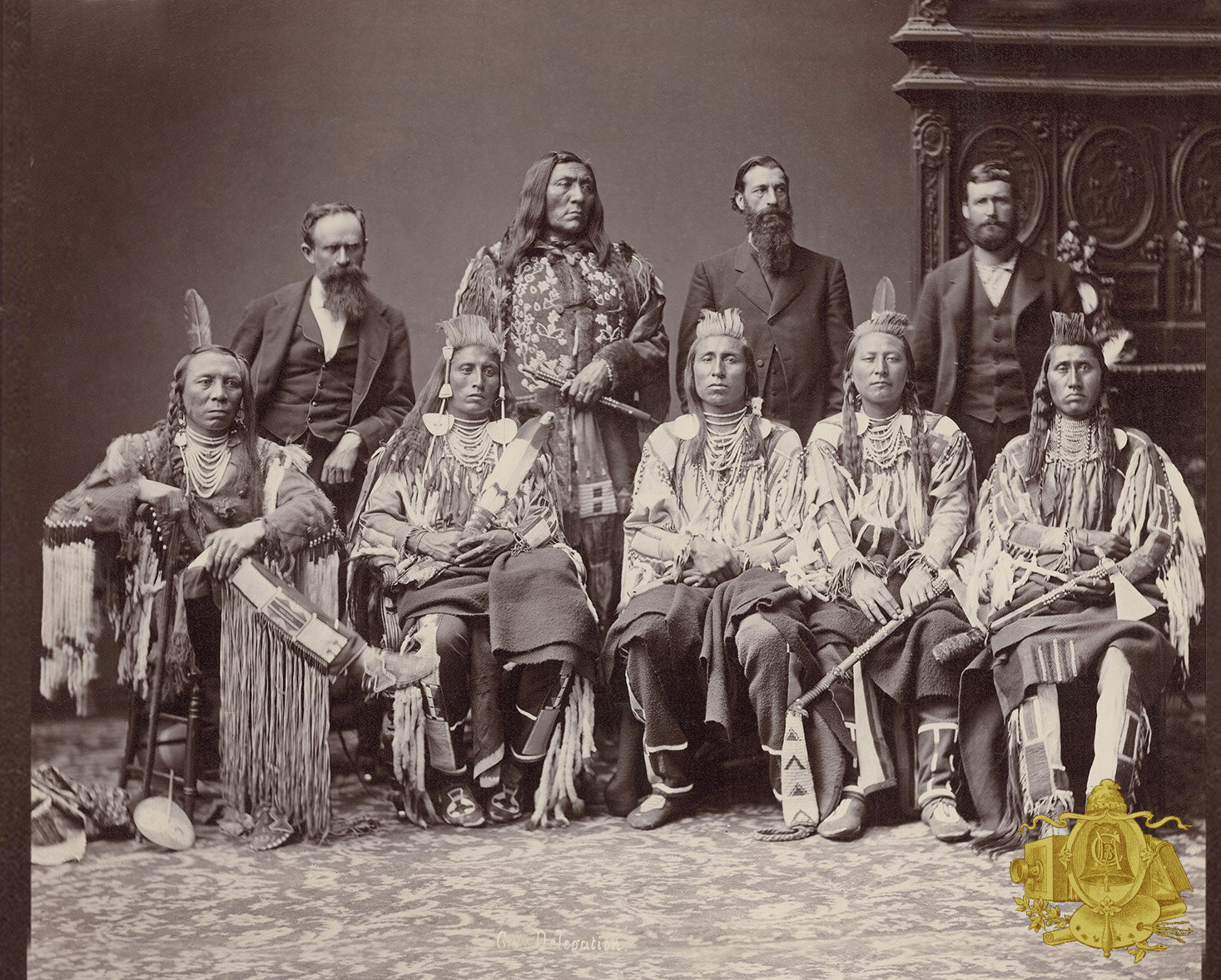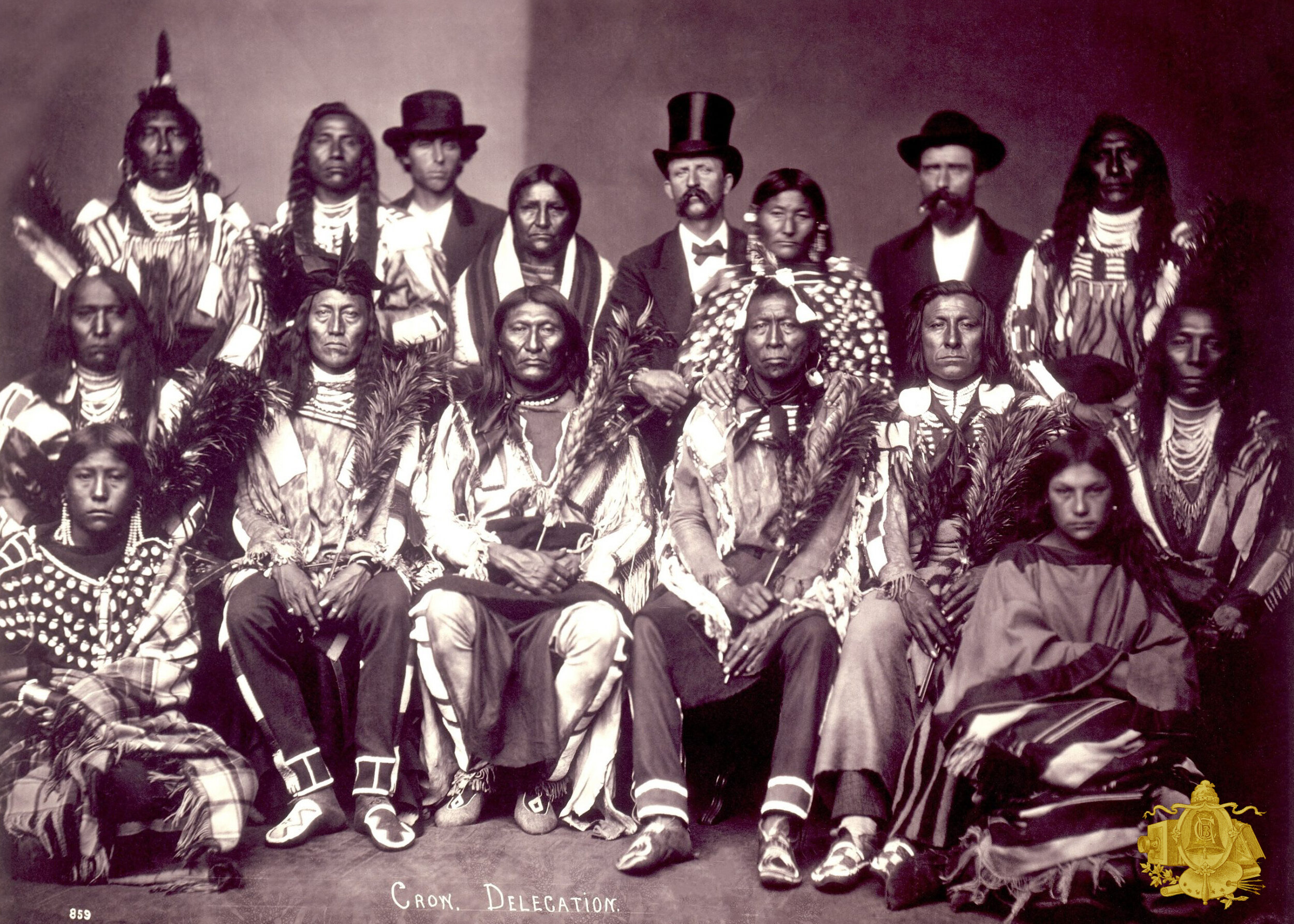

“C. M. Bell may be best known today for his Native Americans' photographs, which he began to produce in 1873. It was Ferdinand V. Hayden, director of the United States Geological Survey of the Territories, who turned to him for the continuation of a project that had begun several years earlier. The assignment was to photograph as many of the Indian visitors to the capital as possible, during this period of intense treaty negotiations. A trip to the photographer's studio was apparently a reward accorded to cooperative chiefs. Hayden had employed photographers for the project from the studios of Washington photographers Alexander Gardner, A. Zeno Shindler, and Julius and Henry Ulke. In 1879, when Hayden's collection of negatives was turned over to the Smithsonian's Bureau of American Ethnology, Bell continued to be of service. For the Smithsonian, he made the photographs used as the basis for some of the illustrations of Garrick Mallery's classic work, "Sign Language among North American Indians," published in the first annual report of the Bureau of American Ethnology, 1879-80.”
-Dr. Kathleen Collins, The Washingtoniana, 1989
Geo. Deerhorn
Peelatchixaaliash
Wah Shem Gah
Bahbeskeit
Standing on the Prairie
Bia Eélisaash
Fire Lightning
Unidentified Native American
Little Big Man
Big Road
Fox
BLue Hair
Photographer Edward Curtis | Learn more
Walking Cloud
Unidentified Native American
Juanita, Wife of Navajo Chief Manuelito
Red Cloud | Click to learn more
Full delegation of Sioux Indians, 1891
Left to Right | LongHorse, Blackhorse, WhiteHorse
Otoe Delegation
Spotted Elk
Big Road
Young Man Afraid of His Horses
Unidentified Native American
Unidentified Native American
Wah Shem Gah
Geo. Deerhorn
Shontona
Waulicomo
Deroin & Whitewater
Two Moons
Sioux chiefs visiting Washington, October 13, 1888
Sioux chiefs to ratify the sale of lands in South Dakota, 1889
Delegation of Sioux Indians, 1891
Unidentified Native American
Ale Ko
Apsáalooke Delegation
Alaxchiiaahush
Chief Joseph
Crow Delegation, 1880
Déaxitchish
Déaxitchish Profile
Peelatchiwaaxpáash
Peelatchixaaliash
Red Cloud
"I have tried to get from my Great Father what is right and just," exclaimed Red Cloud to government officials after his first trip to Washington D.C. in 1870. Two years earlier, the celebrated Lakota leader had forced U.S. authorities to abandon a series of newly constructed forts meant to protect settlers moving across traditional Native lands. Beginning in 1870, however, Red Cloud would choose diplomacy, not warfare, to protect the Lakota's land base and ensure the tribe's political and cultural independence. Although the westward migration of American settlers would continue mostly unabated, Red Cloud remained dedicated to the future welfare of the Lakota, meeting with five different U.S. presidents over a period of thirty years. Washington photographer Charles M. Bell seated Red Cloud next to a paper-mâché rock and a painted seascape backdrop for this portrait taken during one of his many trips to the nation's capital.
The Smithsonian
Edward Sheriff Curtis
As Charles Milton Bell worked from the confines of his studios in 1885, emerging in the midwest, a talented photographer was working in the field in the vast expanse of the western United States. Edward Sheriff Curtis cannot be overlooked when studying 19th Century photography of Native Americans. Curtis was devoted to "respecting the mode of life of one of the great races of mankind." He sought to collect "at once or the opportunity will be lost." He not only photographed Native Americans, but he also recorded audio and film as early as 1906.

